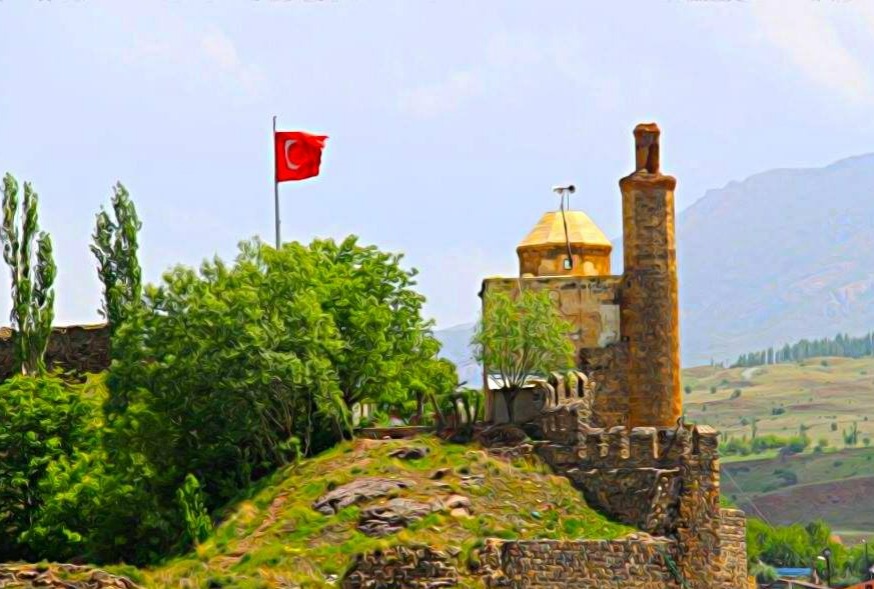İspir
İspir is a district of Erzurum province. The settlement was called "Saspeir" by Herodotus, "Hesperit" by Xenophon, and "Sber/Sper" by the Byzantine Fastus. It is also claimed that the name of the city comes from the Sasper people who settled on the banks of the Çoruh River. Georgian name Speri; Its Armenian name is Sber or Sper. İspir and its surroundings are on natural and historical roads that connect the Eastern Anatolia Region to the Black Sea coast and the Caucasus and were used for military and commercial purposes in various periods of history. Especially the numerous castles and garrisons on the Serçeme valley-İspir route show that this is a main road that has been used for a long time. In addition, Ispir received immigration from its surroundings due to its availability for agriculture and animal husbandry. İspir, which is claimed to have taken its name from the Saspers, has been the settlement area of Hurrian, Urartu, Saka (Scythian), Med, Persian, Roman, Byzantine, Sassanid, Umayyad, Abbasid, Seljuk, Ilkhanid, Karakoyunlu, Timurid, Akkoyunlu, Georgian Kingdom and Ottoman civilizations. . İspir and its surroundings are mentioned as Kulka (Qulha) in the cuneiform documents of the Urartians. The settlement, known as Sper under Byzantine rule, was the scene of the Byzantine-Georgian struggle. Ispir and its surroundings, which were captured by the Seljuk forces in 1048, changed hands frequently between the Byzantines and the Seljuks until the Battle of Manzikert. It came under the rule of the Saltuklu Principality, which was established in İspir in 1072, together with the region given to Ebû'l-Kasim Saltuk by Alp Arslan. After the collapse of the principality in 1202, II. He was left with Erzurum and its surroundings to his brother Mugis ed-Din Tugrul Shah by Suleyman Shah. After a short period, also known as the Erzurum Seljuks, the region, which was dominated by the Anatolian Seljuk State in 1230, was captured by the Mongols in 1242. Later, Ispir and its surroundings remained under the rule of the Ilkhanids, Eretna Principality, Karakoyunlu, Timurids and Akkoyunlu. Although İspir Castle was captured by Ottoman forces in 1499, it was taken back by Georgian forces in a short time. İspir, which came under Ottoman rule after the Çaldıran Campaign of 1514 and became a sanjak in 1515, was annexed to the newly established Diyarbekir province in the same year. It became a sanjak of the newly established Erzurum province in 1535. In the Avarız notebook dated 1642, there were 12 Muslim households, 17 non-Muslim households, 139 soldiers and 10 religious officials in the İspir district. In total, there were 531 Muslim and 286 non-Muslim households in the İspir district. According to the population census book dated 1835, there are 152 settlements in İspir, including the district center. In this census, the total number of men living in İspir district center and villages was 11,308, of which 10,691 were Muslim men and the remaining 617 men were non-Muslim population. In sources dated 1839, İspir was recorded as a township. İspir, which was a district of the central sanjak of Erzurum until 1880, was connected to Bayburt, which was made a new sanjak on this date. After Bayburt was reduced to the status of a district, İspir became a district of the central sanjak of Erzurum again in 1888. Between 1892 and 1898, İspir was a district with 143 villages. A telegraph line came to the settlement in 1895-1896. In 1900, postal services were put into service between Bayburt and İspir. Again in 1900, the new "Government Mansion" was put into service. After Ispir and its surroundings remained under Russian rule between 1916 and 1918, it was taken back by the troops of the 1st Caucasus Corps under the command of Kazım Karabekir on 25 February 1918.










Leave Your Comments